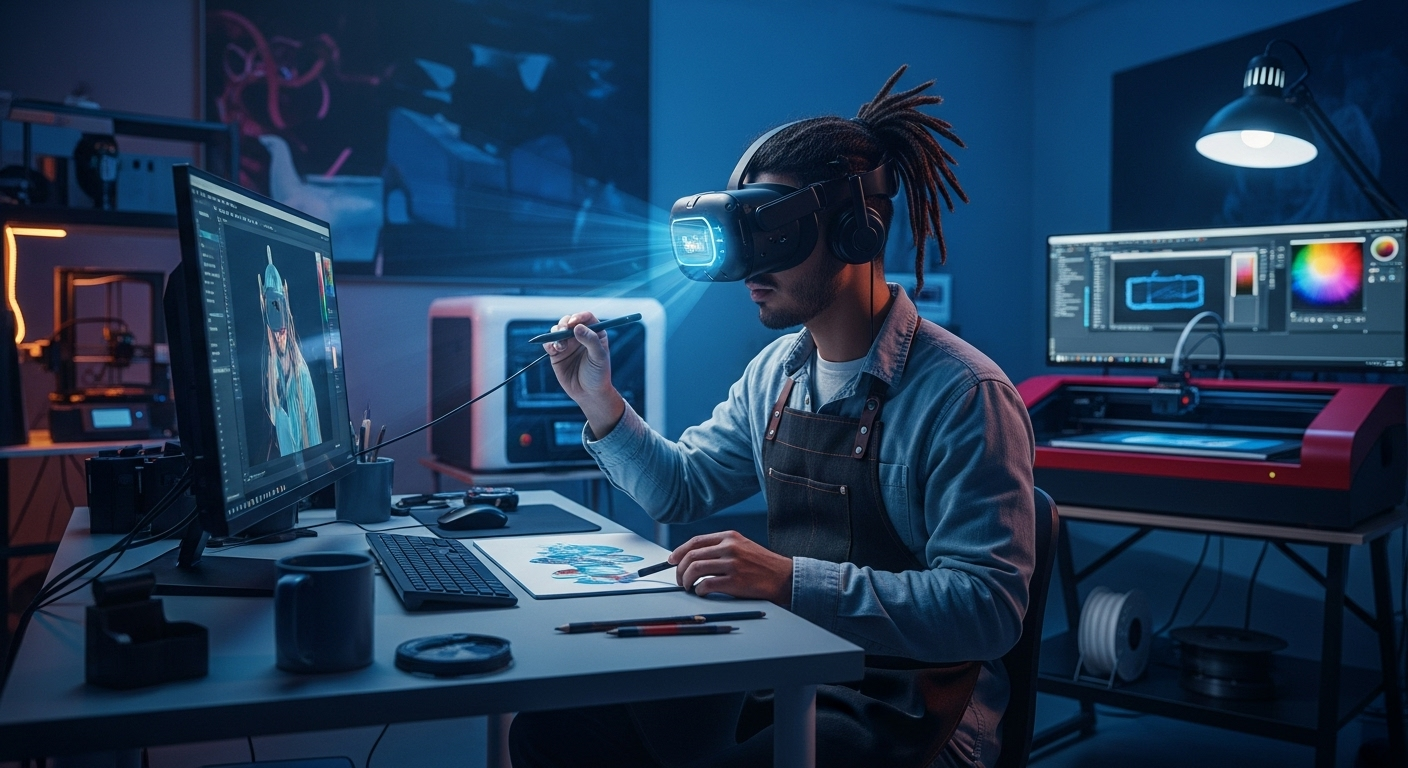"Digital Canvas: The Technological Infusion in Contemporary Art"
The intersection of technology and art is not a new concept. However, in the contemporary era, the fusion has become more profound and more dynamic. This article delves into the evolution of digital art, its current scenario, and its significance in the global art and entertainment industry.

The Genesis of Digital Art
The genesis of digital art can be traced back to the mid-20th century when artists started to experiment with emerging technologies. Early pioneers like Vera Molnar and Harold Cohen used algorithms and early computers to create their works. Today, the field has expanded dramatically, incorporating new technologies like artificial intelligence (AI) and virtual reality (VR) to create immersive and interactive experiences.
Digital Art in the 21st Century
In the 21st century, digital art has taken a quantum leap. Artists are now using sophisticated software, AI, and VR to create their masterpieces. One of the most high-profile examples is the AI-generated artwork “Portrait of Edmond de Belamy” which was auctioned for a staggering $432,500 at Christie’s in 2018. The increasing acceptance and recognition of digital art signal a transformative shift in the art world.
Impact of Digital Art in the Entertainment Industry
The impact of digital art extends beyond traditional galleries and museums. It has permeated the entertainment industry, influencing everything from film and television to video games and music videos. For instance, the use of CGI (Computer Generated Imagery) has revolutionized the film industry, enabling filmmakers to create realistic and visually stunning scenes.
The Significance of Digital Art
Digital art is more than just a new medium—it’s a democratizing force in the art world. It’s accessible, enabling artists who might not have access to traditional art supplies or gallery spaces to create and share their work with a global audience. It’s also interactive, allowing audiences to engage with art in new and exciting ways.
The Future of Digital Art
As technology continues to evolve, so too will digital art. Emerging technologies like blockchain are already starting to shape the future of digital art. For instance, the rise of NFTs (Non-Fungible Tokens) is offering new ways for digital artists to monetize their work. As we move further into the digital age, it’s clear that the intersection of art and technology will continue to be a dynamic and exciting space.
The fusion of art and technology in the form of digital art is an exciting development in the arts and entertainment industry. It’s a testament to the endless possibilities of human creativity when combined with technological innovation. As digital art continues to evolve and influence the wider cultural landscape, it’s clear that this is just the beginning of a new era in artistic expression.




